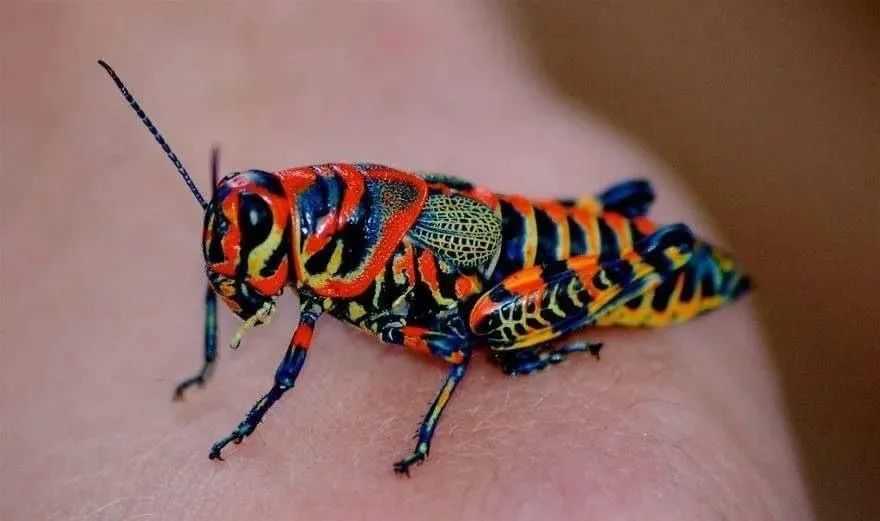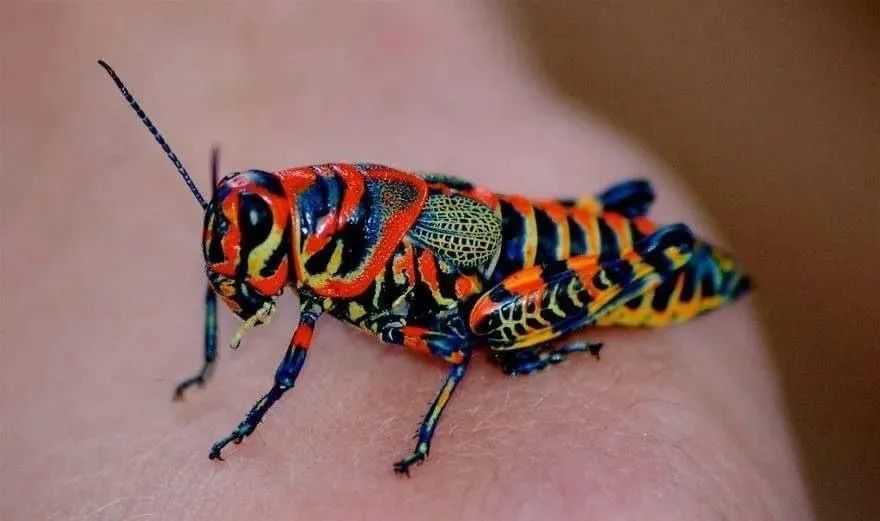The Rainbow Grasshopper: A Vibrant Jewel of North America's Arid Plains
Native to the arid grasslands and sparse shortgrass habitats of North America, the rainbow grasshopper (Dactylotum bicolor) dazzles with its striking array of hues, defying the muted tones of its dry, sun-baked environment. This medium-sized orthopteran, also known as the painted grasshopper, showcases a vivid palette of red, orange, yellow, blue, and purple on its abdomen, legs, and wings, making it one of the most colorful insects in the region.

Source: Images from the Internet, if there is any infringement, please contact the removal of
The grasshopper's bold coloration serves as a warning to predators: its body contains toxic compounds derived from the plants it consumes, particularly species of locoweed. This aposematic adaptation signals its unpalatability to birds and other predators, who learn to avoid the bright patterns after a single unpleasant encounter. When threatened, the grasshopper may also spread its wings to reveal even more vibrant undersides or emit a pungent odor, further deterring attackers.
Primarily found in the Great Plains and southwestern United States, the rainbow grasshopper thrives in open, dry landscapes with sparse vegetation. Its life cycle is tied to the availability of host plants, and while it can occasionally form small groups, it does not exhibit the swarming behavior of locusts. Despite its eye-catching appearance, this grasshopper plays a crucial role in its ecosystem as both a herbivore and a food source for predators that have adapted to tolerate its toxins. As climate change shifts arid habitats, the rainbow grasshopper remains a symbol of nature’s ability to paint even the harshest environments with bursts of life and color.


